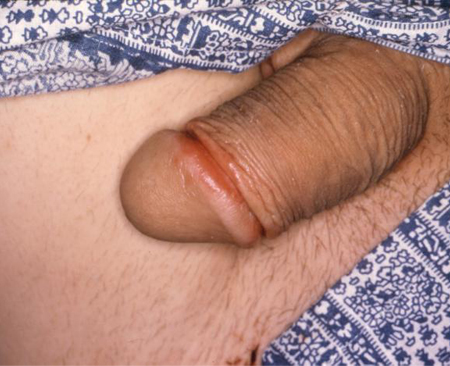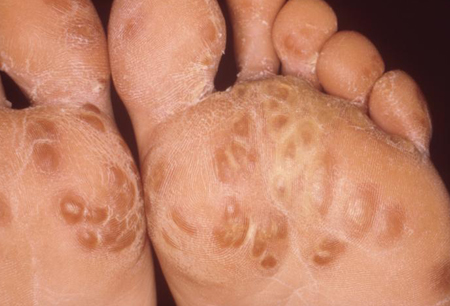Reactive arthritis
- Overview
- Theory
- Diagnosis
- Management
- Follow up
- Resources
Treatment algorithm
Please note that formulations/routes and doses may differ between drug names and brands, drug formularies, or locations. Treatment recommendations are specific to patient groups: see disclaimer
symptomatic relief
non-steroidal anti-inflammatory drug (NSAID)
No NSAID has been shown to be superior to any other in ReA.
Primary options
naproxen: 250-500 mg orally twice daily when required, maximum 1250 mg/day
OR
ibuprofen: 300-400 mg orally three to four times daily when required, maximum 2400 mg/day
OR
diclofenac potassium: 50 mg orally (immediate-release) twice or three times daily when required
OR
diclofenac sodium: 100 mg orally (extended-release) once daily when required
OR
indometacin: 25 mg orally two to three times daily when required
corticosteroid
Corticosteroids may be used if symptoms are unresponsive to NSAIDs or during an acute flare.
Intra-articular injections in monoarticular and oligoarticular forms may provide short-term relief, but systemic corticosteroids may be required if many joints are affected. Systemic corticosteroids can be helpful in treating ocular manifestations, such as iritis.
Topical corticosteroids can be used to treat skin involvement, such as for circinate balanitis and keratoderma blennorrhagicum.[Figure caption and citation for the preceding image starts]: Balanitis in a patient with reactive arthritis.Image provided by the CDC Public Health Image Library [Citation ends]. [Figure caption and citation for the preceding image starts]: Keratoderma blenorrhagia in a patient with reactive arthritis.Image provided by the CDC Public Health Image Library [Citation ends].
[Figure caption and citation for the preceding image starts]: Keratoderma blenorrhagia in a patient with reactive arthritis.Image provided by the CDC Public Health Image Library [Citation ends].
Primary options
prednisolone: 0.5 to 1 mg/kg/day orally, taper dose gradually as soon as practical
Secondary options
methylprednisolone: consult specialist for further guidance on intra-articular dose
OR
triamcinolone topical: (0.1% cream) apply sparingly to the affected area(s) twice daily
persisting or chronic reactive arthritis
disease-modifying antirheumatic drug (DMARD)
DMARDs are considered either when NSAIDs fail or when more aggressive treatments are needed to prevent radiographic joint destruction.
In a prospective double-blind placebo-controlled trial, sulfasalazine improved response rates in patients with ReA unresponsive to NSAID therapy.[71]Clegg DO, Reda DJ, Weisman MH, et al. Comparison of sulfasalazine and placebo in the treatment of reactive arthritis (Reiter's syndrome). A Department of Veteran's Affairs Cooperative Study. Arthritis Rheum. 1996;39:2021-2027. http://www.ncbi.nlm.nih.gov/pubmed/8961907?tool=bestpractice.com If the medication is not effective within 3 to 4 months, it should be discontinued.
Primary options
sulfasalazine: 500 mg orally once daily initially, increase by 500 mg/day increments at weekly intervals according to response, maximum 2 g/day given in 2-3 divided doses

Choose a patient group to see our recommendations
Please note that formulations/routes and doses may differ between drug names and brands, drug formularies, or locations. Treatment recommendations are specific to patient groups. See disclaimer
Use of this content is subject to our disclaimer